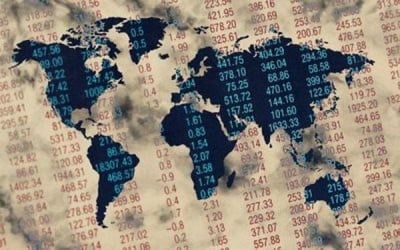Central Bank Economists: Bad Central Bank Policy Is Increasing Inequality

While the leaders of the Fed and other central banks claim that their extraordinary monetary policies haven’t significantly increased inequality, economists with the world’s most prestigious financial agency, the Bank of International Settlements – known as “the Central Banks’ Central Bank” – just released a report showing otherwise.
BIS notes:
Our simulation suggests that wealth inequality has risen since the Great Financial Crisis. While low interest rates and rising bond prices have had a negligible impact on wealth inequality, rising equity prices have been a key driver of inequality …. Monetary policy may have added to inequality to the extent that it has boosted equity prices.
Inequality is back in the international economic policy debate. Evidence of a growing dispersion of income and wealth within major advanced and emerging market economies (EMEs) has sparked discussions about its economic consequences. Although there is no consensus on the relationship between inequality and growth, there are concerns that rising inequality may become a serious economic headwind. [Right.]
Moreover, the faster rise in remuneration at the very top of the income distribution relative to wage growth in the lower percentiles has been linked both to the rapid growth of the financial sector since the 1980s [correct] and to changes in the social norms that contribute to the determination of executive pay (Piketty (2014)).
The share of securities holdings, equity in particular, tends to be even higher at the top 5% or 1% of the distribution. [Obviously.]
Conversely, housing accounts for a higher share in the lowest net wealth quintile, for which low net wealth is in many cases a reflection of high levels of mortgage debt. In a number of cases, net wealth is negative, suggesting that liabilities, in the form of mortgage, consumer and other debt, exceed assets.
Unconventional monetary policies might have had the most significant effects on the dynamics of wealth inequality through changes in equity returns and house prices. The evidence suggests that unconventional policies had a relatively strong and immediate effect on equity prices (see eg Rogers et al (2014)). As investors reshuffle their portfolios away from assets being purchased by the central bank towards other, potentially riskier, assets, the equity risk premium should decline, boosting equity prices further. And a low interest rate environment is likely to have encouraged a search for yield.
Monetary policy may affect household wealth through different channels. Interest rate changes directly affect the valuation of both financial assets (eg equities and bonds) and real estate as well as the cost of leverage. Conventional easing of monetary policy by lowering short-term interest rates tends to boost asset prices. This works through a lowering of the discount rates applied to future income flows from these assets, and possibly by raising profit expectations and/or reducing risk premia.
Indeed, boosting stock prices has been the Fed and other central banks’ main focus.
In addition, it has been thoroughly documented that quantitative easing. It’s been known for some time that quantitative easing (QE) increases inequality (and see this and this.) Many economists have said that QE quantitative easing benefits the rich, and hurts the little guy. 3 academic studies – and thearchitect of Japan’s quantitative easing program – all say that QE isn’t helping the American economy.
Negative interest rates – another increasingly widespread form of extraordinary monetary policy – may increase inequality as well. For example, economist Katie Evans notes:
Negative interest rates could increase inequality. While the experiences of countries who have tried negative rates suggest it wouldn’t lead to a boom in mortgage lending, the cost of borrowing would remain at rock bottom for those who could afford to do so. Those with substantial incomes and existing assets could borrow cheaply and invest in assets like property. Those on lower incomes, meanwhile, would find it even harder to save for a deposit and see house prices rising further out of reach.
Indeed, negative interest rates motivate consumers to hoard cash, rather than spend or invest it, putting in even further behind those who have enough to freely invest.
Other recent central bank policy is also a main driver of inequality. And see this.
Postscript: Surprisingly – given the arcane nature of central bank policy – the natives are getting restless.

